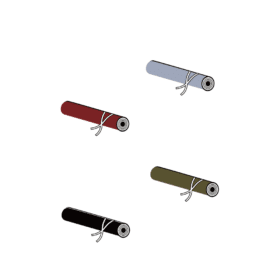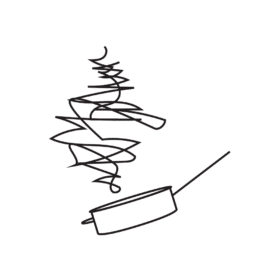When we set about researching the best bread knife design the team at Kikusumi surveyed both casual and professional users to get a sense of what details mattered most. We also studied many of the bread knives being sold today and in the past, all across the globe. Important details to consider included the shape, length and and materials. Our research suggested that each component of the knife needed to be designed right individually as well as seamlessly fit together so that the overall balance and feel was ideal. Bread knives are an essential tool for any home kitchen and are often used on a daily basis which makes them an important knife to design right. The easier a knife is to use and the better it performs – the more it people will want to use it. A knife that is precise, balanced, comfortable and inspiring was the goal we set for the Kikusumi bread knife.
SERRATED BLADE
A bread knife is unique in that it has a serrated blade edge whereas most knives are smooth. Serrated blades are designed to cut through harder surfaces like artisan bread crust. They are also better at cutting through delicately just-baked bread, soft cakes or delicate pastries as the blade teeth help grip the surface as the blade cuts. This results in less compression and a better final shape of the slice. The keys to designing the best bread knife blade is the width and spacing of the serrated teeth on the blade.
Kikusumi Bread Knife is ideal for all types of breads and pastries whether soft and airy or hard and dense. It can also be used to remove the rind on fruit and vegetables with tough or waxy skins that smooth edge blades struggle with.
 BLADE LENGTH
BLADE LENGTH
Determining the best bread knife length takes into consideration what size of bread will be cut most often. Keeping in mind the longer the blade the more difficult it is to use. The ideal length of a blade for a bakery or restaurant that routinely cuts loaves of bread over 1 pound (500 grams + ) is different from that of someone cutting in a home kitchen. Kikusumi set out to design a bread knife for the home kitchen user and through its research concluded 8″ (20 cm) to be the ideal balance between performance and ease of use for most uses in a home kitchen.
BLADE MATERIAL
The choice of knife blade material is a very important and often debated point for knives. Steel may be the most common material used for knives but it is not always the best. Bread knives have longer blades than most other knives and really benefit from being made of a more rigid material. A rigid blade flexes less which means it is easier to cut straight. Serrated knives also have teeth with makes them more difficult to sharpen. A harder material needs to be sharpened less often than a softer one which translates into a better user experience.
Ceramics is a relatively new material choice and one that offers several advantages over steel. Zirconium Oxide registers second on the hardness scale only to diamond. It is 50% harder than steel which makes it an ideal choice for a bread knife because it is more rigid and requires less frequent sharpening. Kikusumi chose to use zirconium oxide #4 which is the highest grade and the most expensive to make its knife blades. Kikusumi blades hold their sharpness longer and are easy to cut straight with. Chemically inert, Kikusumi ceramic blades will never rust or cause food to brown and do not hold onto odors like other materials.

HANDLE SHAPE
Along with the blade, the handle quality of a bread knife determines how well it functions. Great knife handles are very easy to hold – the technical term for how a handle fits the hand is called ‘ergonomics’. An ergonomic handle fits the natural curves of the hand and is supportive at the points where the most pressure is applied. When designed correctly the handle helps facilitate the cutting motion while reducing hand fatigue. Each individual knife in the set is fitted with an ergonomic handle fits the natural curves of the hand and is supportive at the points where the most pressure is applied. A palm swell in the middle of the handle provides a relaxed and comfortable handhold. It keeps your hand in the same place on the handle and provides a natural pivot point. It retains its comfort even after hours of use. The human hand should be the starting point for knife design and that is how Kikusumi designed its knives.
HANDLE MATERIAL
The material chosen for the handle effects the grip and hand feel. A slippery grip can lead to injuries. Hard, non-porous materials like steel are difficult to hold because they become slippery when wet. This happens when the hand perspires in warm weather or when ingredients are wet like freshly washed vegetables. Steel also feels cold and less personal. Designers who don’t cook sometimes choose steel as a handle material because it can used to create a “new” shape that looks good in magazines. We disagree with this approach to knife design. Knife design ought to consider its functional performance above all else. Kikusumi chose to make a handle that gives a firm yet comfortable grip. The handle consists of an inner core of ABS plastic for resistance and toughness combined with a thinner outer layer of TPR which gives it a soft and tactile grip to prevent slipping even when wet.
 WHERE HANDLE MEETS BLADE
WHERE HANDLE MEETS BLADE
Where the handle meets the blade is a critical consideration in the design of a knife and one that is surprisingly often done wrong. In our research we found many knives that have a handle that covers and extends past the heel of the blade. Kikusumi considers this a serious flaw because it prevents the knife from making a clean cut through food. Sushi chefs use knives with considerable clearance from the bottom of the blade heel to the bottom of the handle for precisely this reason. No matter what you cut if your knife blade cannot reach the cutting board then it cannot make a clean cut. There needs to be adequate space between the bottom of the blade and the handle. All Kikusumi knives have that built into their design.
AESTHETIC
The handle width and length should be designed to fit the human hand. Kikusumi knives are inspired by traditional craftsmanship and emblazoned with artisanal luxury design. With a simple minimalist design marked with a fiery red Kikusumi logo that acts as a spark for your creativity. Packaged in a unique box that tells the Kikusumi story both graphically and in words its beauty is sure to create a memorable unboxing experience.
PROCESS
Available in a limited edition quantity the Kikusumi ceramic bread knife is minimalist and elegant. It takes incredible heat to transform this zirconium oxide into a beautiful knife blade. A 45 day process involves careful molding of zirconia powder that transforms under intense pressure and then heat to emerge from the kiln in its final form. Like pottery raw zirconia is baked at a temperature of 1500ºC until the ceramic reaches an exceptional quality. After cooling and settling for days, three polishing treatments are applied for an immaculate, smooth finish. The surface, bezels, and details of the ceramic are repeatedly treated to achieve an incomparable look. Before the ceramic knives are packaged they are subject to rigorous quality inspections, ensuring that if you’re holding one in your hands, it should be free from imperfections.

THE BEST BREAD KNIFE
The Kikusumi black ceramic bread knife set includes a perforated blade sheath to protect its sharpness when not in use. It is ideal for the home kitchen whether it be a gift for a mother or starting set for a university student or first-time workers in urban cities. It also makes an excellent knife for those wanting sharpness and precision that requires less time and effort to maintain. For those who love design the minimalist and elegant Kikusumi design style will fit seamlessly with any kitchen decor. With the right knife you can express your passion for cooking a. This is your bread knife.

 KULUR ROLL
KULUR ROLL COOKING
COOKING BLADE LENGTH
BLADE LENGTH WHERE HANDLE MEETS BLADE
WHERE HANDLE MEETS BLADE